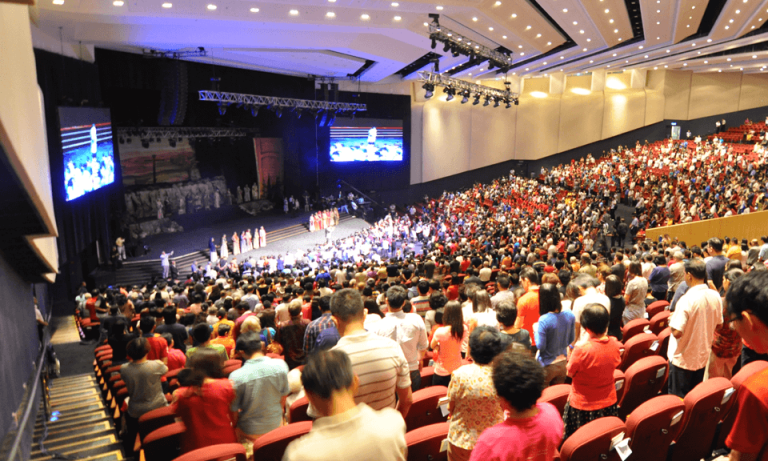
A Quick Guide to Media Converters & Network Extenders
Since the beginning of networking, media converters have played a fundamental role in solving network interconnection problems. But despite this, there is still confusion on how to use this family of devices. This article explains what a media converter is and how to use it, the models available, and highlights some new time-saving features.
What is a media converter?
Media converters provide flexibility to networking solutions by enabling fiber and copper cables to be easily connected.
Switches mostly contain LAN ports, usually copper Ethernet with a few fiber-based uplink ports, often SFP-based. The copper ports connect devices within a short-range (up to 100 meters) while the SFP uplinks can connect devices, like other switches or servers, that are further away.
In a well-designed network, the goal is to use all the available uplinks to maximize throughput. LAN ports, however, are usually provisioned to keep some spare ports to allow new devices to be connected easily in the future. This plan works well until a new device connects to a LAN port, but the device is more than 100 meters (300 feet) from the switch. Or the new device is in an electrically “noisy” environment and a copper cable will be susceptible to electromagnetic interference.
A computer placed in a remote location, an access point in an outdoor area, a video surveillance camera, or an access control system far from the last switch, are all typical examples of this kind of situation. If the requirement is to extend the LAN beyond 100 meters, a network extender is required and a media converter is the perfect solution.
A media converter is usually a two-port device equipped with a copper interface on one side and a fiber interface on the other side. Extending a network to a distant location is achieved by using a fiber connection from the switch and a media converter to connect to the device.
From the network point of view, the extended connection is just an Ethernet link like any other, but it has a very long reach that solves the remote device problem without the need to add other switches to the network.
Types of media converters
The most common type of media converter connects fiber and copper cables, but others can convert Ethernet to VDSL or inject Power over Ethernet (PoE).
Media converters are typically small standalone unmanaged devices, but they can also form managed and unmanaged chassis solutions to integrate multiple devices within your network in a 19" standard rack. Installations in harsh environments can be achieved with a dedicated series of rugged industrial media converters mounted in DIN rail cabinets.
The most common model of media converter is the copper to fiber with one RJ45 port and one fiber port or SFP bay. The transport protocol is always Ethernet to allow another converter or a switch equipped with the appropriate interface to be connected easily.
Sometimes it's not possible to use a fiber link because legacy infrastructure, such as twisted-pair phone cables or co-ax cables, are already in use, and replacing with new fiber is not practical. To allow the use of legacy infrastructure, media converters are available to convert Ethernet to co-ax or Ethernet to twisted-pair. These devices use VDSL (Very high Data rate Subscription Line) technology to reach long distances over legacy cables.
Some converters provide Power over Ethernet (PoE) on the copper Ethernet port to power remote devices, like CCTV cameras or access control gates, simplifying deployment of physical security solutions.
Media converter port speeds include Fast Ethernet, Gigabit and 10 Gigabit covering the most commonly used interfaces today. SFP ports can satisfy a wide range of distances and speeds, with transceivers able to operate on fibers from just a few meters in length, up to 120 km.
Media converters can be used on the desktop too. The USB to fiber Ethernet media converter acts as a Network Interface Card for your desktop or laptop to quickly deploy a Fiber To The Desk (FTTD) solution for security-sensitive applications, or those more than 100 meters from the switch.
Media converter features
Typically media converters are dumb devices, however, some have smart features that simplify the management of large networks.
One of the common ways to solve computer-related problems is to power-cycle the device and see if the problem disappears. For PoE-powered devices, it is easy to turn off the power on the switch port connected to the device to reset it automatically. But since most media converters are not remotely manageable, they cannot do this. Instead, a person must be dispatched to the remote site to disconnect the PoE cable and reconnect it.
Allied Telesis DIP switch configurable PoE Media converters enable PoE power to be reset whenever the fiber connection is turned off and on. The Remote Power Cycle feature enables you to reset remote devices by controlling the fiber connection on the switch, without the need for a remote site visit.
Media converters can also sometimes create problems with link failure detection. For example, if a fiber connection between two switches contains two media converters, the switches cannot detect a single fiber link failure, leading to faulty links and unreliable networks. The Allied Telesis Smart MissingLink feature enables media converters to pass the link status of their connections and thereby trigger corrective action when a problem on a link is detected.
Let's answer some frequently asked questions:
What is a network media converter, and what does it do?
A media converter is a networking device that connects two different media, like Ethernet copper and Ethernet fiber. Typically, they connect devices that are beyond 100 meters from the nearest available switch. When used like this, a copper to fiber converter can connect a copper port on an Ethernet switch to the fiber that connects the device in the remote location, thereby extending the reach of the copper port.
How does a media converter work?
There are two main groups of media converters. The first group can convert only physical media, i.e., copper to fiber, or fiber to copper, without adjusting the speed of the link. Typically these devices are used whenever latency (a time delay when transmitting the traffic) is a critical factor, and it is not acceptable to have any delay in the conversion process. The second group of media converters are often called switch converters or rate converters and are a standard Ethernet switch equipped with two ports. These devices can adjust both the media and the link speed so that it is possible to connect a 10/100/1000T port to a 100FX port. However, the switch adds a small amount of latency to the connection, making this group unsuitable for time-sensitive applications.
What is a media converter switch?
An active media conversion device that includes a switch chip can be known as a switching media converter. The switch enables the link speed to be adapted to suit a wide variety of conversion tasks, but the switching component adds latency, making them unsuitable for some tasks.
What is a fiber media converter?
The term fiber Media Connector indicates a media connector where one of the two ports is fiber Ethernet, and the other port is copper Ethernet.
Do media converters have to be used in pairs?
No. Fiber media converters can be connected to any compatible Ethernet fiber port, including directly to a switch port, so only one device would be required. However, many media converters are designed to work in pairs, including those for legacy infrastructure, like co-ax or twisted-pair cables. For these applications, VDSL media converters can be used to send Ethernet traffic over legacy cables and for extended distances. For these scenarios, media converters are used in tandem on both sides of the link to guarantee full compatibility and optimal performance.
Do media converters work in both directions?
Yes. Media converters work with bidirectional links, so the same model can be used to convert copper to fiber but also from fiber to copper. When used in pairs, you can use the same model for both ends since they work both ways.
Are media converters approved for government use?
Yes, provided they meet local compliance standards, such as the Trade Agreement Act (TAA) and the National Defense Authorization Act (NDAA). We have a full range of NDAA and TAA-compliant media converters that are approved for use by the U.S. Government. Allied Telesis is an authorized vendor to the U.S. General Services Administration (GSA) supplying fiber solutions to the U.S. Federal Government.
Related



